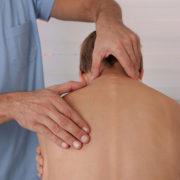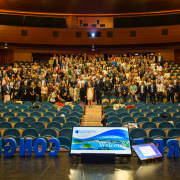Scoliosis Through the Centuries: From Galen to Modern Rehabilitation
Scoliosis, now recognised as a complex three-dimensional deformity of the spine, is a condition known since antiquity.
The first documented accounts date back to the 5th century BCE, when Hippocrates, the father of medicine, described various spinal anomalies — including scoliosis — and attempted rudimentary therapeutic approaches involving traction, manual manipulations, and mechanical devices such as the so-called Hippocratic ladder.
In the 2nd century CE, Galen coined the term scoliosis, from the Greek skolios, meaning “curved” or “twisted.” Galen continued the classification of spinal deformities, introducing the concepts of kyphosis and lordosis, and investigated their possible causes, suggesting links to trauma, systemic illnesses, and congenital abnormalities. For centuries, however, scoliosis was considered solely as a structural orthopaedic condition to be “straightened”, with no development of preventive strategies or targeted rehabilitation treatments.
It was only in the Middle Ages that the first rudimentary corrective tools began to appear. In the 7th century CE, references were made to wooden sticks used to support the back, and by 1575, in France, the first metal corrective brace had been designed. The 19th century marked another step forward with French surgeon Jules René Guérin, who was the first to attempt surgical correction of the scoliotic curve — though with limited success.
A true turning point occurred in 1921, when Katharina Schroth, a German scoliosis patient, developed a rehabilitation method based on postural and breathing exercises. Her insight — using three-dimensional breathing to address spinal rotation and trunk asymmetry — opened the way for the concept that scoliosis could be managed conservatively, not solely through surgery or bracing.
In the 1950s, American surgeon Paul Harrington developed a system of metal rods (the Harrington rod) for surgical implantation in young patients, aimed at halting the curve’s progression. While revolutionary for its time, this method often resulted in rigidity and reduced functionality. To refine surgical treatment, French specialists Cotrel and Dubousset introduced a dual-rod system in the 1980s, offering a more stable and harmonious correction of spinal deformities.
Today, the management of scoliosis has evolved into a multidisciplinary and individualised approach. While no definitive cure exists, effective intervention is possible to prevent progression and minimise the condition’s impact on quality of life. Early diagnosis, physiotherapeutic scoliosis-specific exercises (PSSE) such as SEAS – Scientific Exercise Approach to Scoliosis-, targeted use of braces, and, in severe cases, surgical treatment, are the primary therapeutic strategies.
The journey of medicine over the past two millennia reveals how knowledge and awareness of scoliosis have evolved, transforming what was once a poorly understood condition into a field of ongoing scientific advancement, where research, prevention, and rehabilitation play a central role.











Leave a Reply
Want to join the discussion?Feel free to contribute!